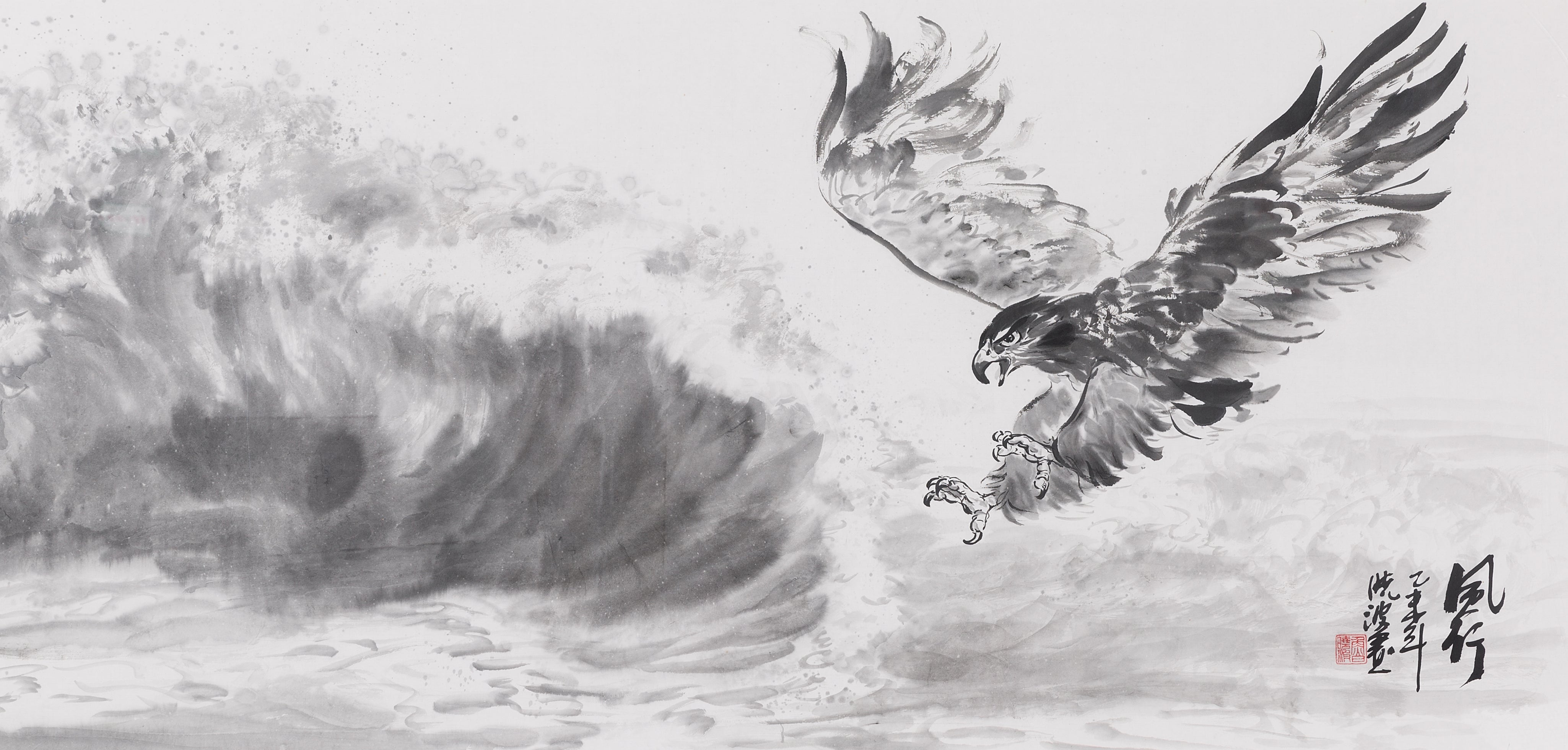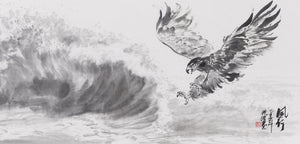Popular
Xiaobo Lu
Artwork Details
Artwork Description
Title: Popular
Artist: Xiaobo Lu
Date: Undated
Medium: Chinese painting
Dimensions: 26.77 x 54.33 in (68 x 138 cm)
1. Artwork Identification
Xiaobo Lu’s Popular presents a dynamic scene featuring two cranes—one in swift retreat from the other—and an eagle with wings dramatically outstretched, either descending or about to strike. Executed in traditional Chinese ink on paper, the work is striking for its intensity and narrative drive. The birds’ positions, coupled with the artist’s gestural brushstrokes, create a composition alive with motion and tension.
2. Artistic Style and Influences
The painting is firmly rooted in the xieyi (freehand) tradition of Chinese painting, where expressive line and atmospheric composition outweigh detailed representation. Lu brings this classical form into contemporary relevance by introducing layered interactions among symbolic birds. The cranes—long associated with peace, grace, and longevity—are juxtaposed with the eagle, a bird symbolic of power and dominance, heightening the emotional resonance of the piece.
3. Historical Context
In Chinese visual culture, birds carry rich symbolic meanings. Cranes often appear in art representing tranquility and spiritual elevation, while the eagle represents strength and heroic vigor. By placing these species within a shared frame and in kinetic dialogue, Lu suggests themes of contrast—perhaps between peace and force, or tradition and change. This type of narrative layering reflects a modern sensibility within the bounds of classical ink traditions.
4. Provenance and Authenticity
Please contact the gallery directly for provenance documentation and certificate of authenticity.
5. Condition and Conservation
The work is presumed to be in good and stable condition. No apparent issues such as foxing, pigment loss, or creasing are evident based on the available materials. For a detailed condition report and conservation record, please contact the gallery.
6. Artistic Significance
Popular exemplifies Xiaobo Lu’s distinctive approach to traditional ink painting. By infusing familiar iconography with dynamic interaction and tension, he not only revitalizes the genre but also invites reflection on coexistence and conflict within nature and society. This work stands as a bold visual metaphor and a noteworthy example of contemporary Chinese ink practice with narrative depth.


